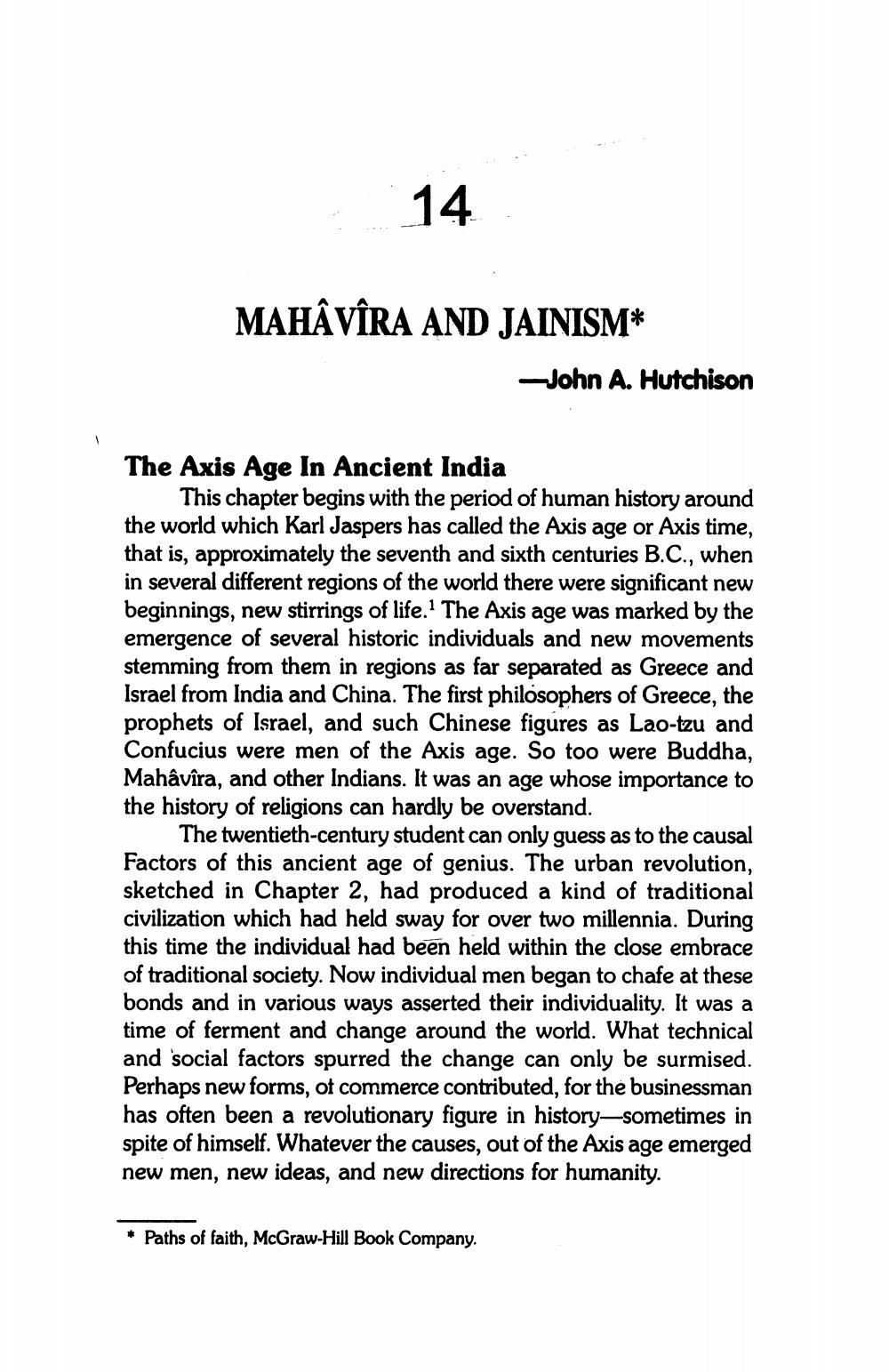________________
14
MAHÂVÎRA AND JAINISM*
-John A. Hutchison
The Axis Age In Ancient India
This chapter begins with the period of human history around the world which Karl Jaspers has called the Axis age or Axis time, that is, approximately the seventh and sixth centuries B.C., when in several different regions of the world there were significant new beginnings, new stirrings of life. The Axis age was marked by the emergence of several historic individuals and new movements stemming from them in regions as far separated as Greece and Israel from India and China. The first philosophers of Greece, the prophets of Israel, and such Chinese figures as Lao-tzu and Confucius were men of the Axis age. So too were Buddha, Mahâvîra, and other Indians. It was an age whose importance to the history of religions can hardly be overstand.
The twentieth-century student can only guess as to the causal Factors of this ancient age of genius. The urban revolution, sketched in Chapter 2, had produced a kind of traditional civilization which had held sway for over two millennia. During this time the individual had been held within the close embrace of traditional society. Now individual men began to chafe at these bonds and in various ways asserted their individuality. It was a time of ferment and change around the world. What technical and social factors spurred the change can only be surmised. Perhaps new forms, of commerce contributed, for the businessman has often been a revolutionary figure in history—sometimes in spite of himself. Whatever the causes, out of the Axis age emerged new men, new ideas, and new directions for humanity.
* Paths of faith, McGraw-Hill Book Company.




